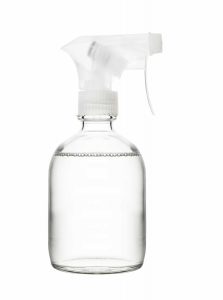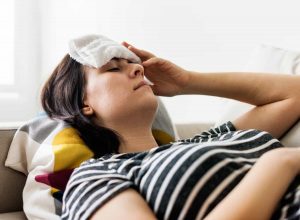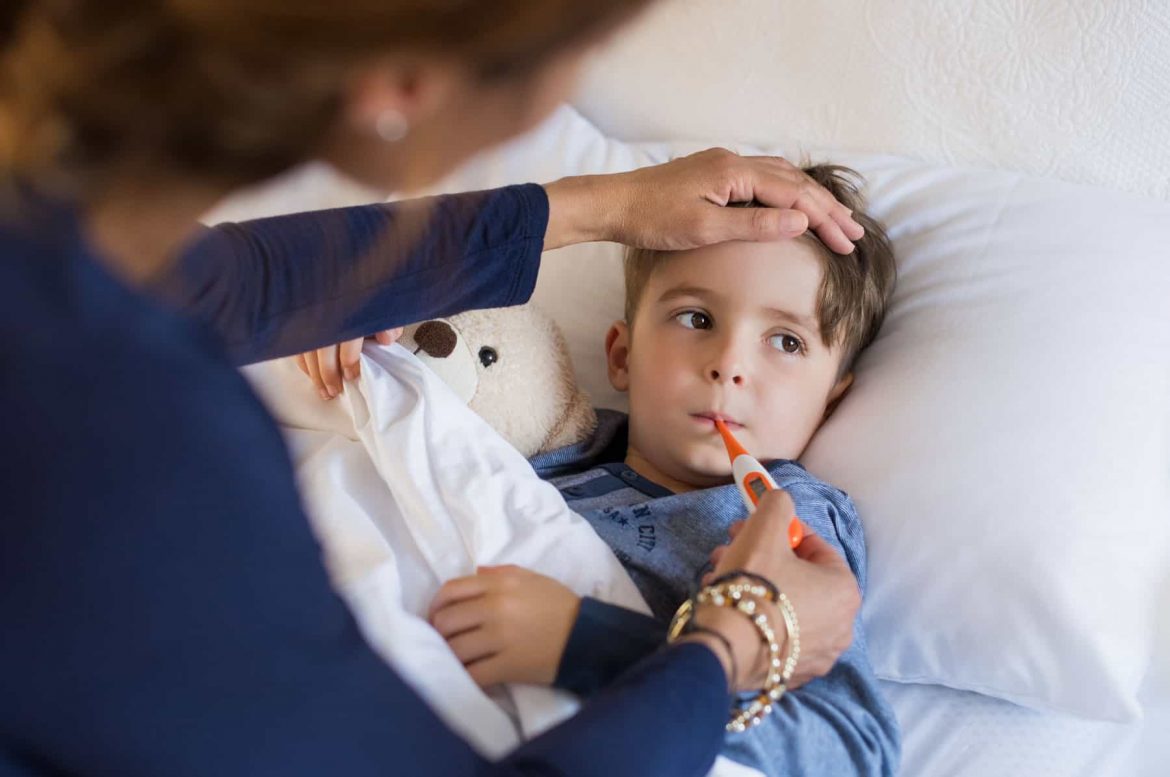Natural Remedies that Work: How to Treat Fever with Essential Oils
If your symptoms are recurrent, or increase in severity, be sure to get it checked by a doctor.
Typically in adults and children, a body temperature of 99˚F or 37.2˚C, when measured from the mouth, is considered as having an elevated temperature, but not a full blown fever. The temperature should be taken at a resting state as strenuous activity brings the body temperature up and provide an inaccurate measurement for the purpose of determining a fever.
A fever one of your body’s natural defense mechanism against bacterias and viruses. It is not necessary to treat a low-grade fever, anything below 100.4˚F or 38˚C, as your body is at a more optimal and efficient state to fighting off bacterias and viruses. As your temperature goes above 100.4˚F or 38˚C, you may consider simple natural remedies to relieve the fever slightly.
Most times, we can sense that we are having a fever because we may get chills, shivering, a headache, and even cold sweats. We also tend to be lethargic throughout the day.
If your temperature is 104˚F or 40˚C, then you are considered to be having a dangerously high fever. It is important to seek medical professional treatment immediately.
Essential oils with antipyretic, analgesic and anti-inflammatory properties will help to treat and relieve a fever.
Caring for Someone with a Fever
 Remember that staying hydrated is extremely important when someone is having a fever. Always remind your family or friend who is down with a fever to have plenty of fluids, such as water and fresh juices, to keep themselves hydrated and loaded with nutrients.
Remember that staying hydrated is extremely important when someone is having a fever. Always remind your family or friend who is down with a fever to have plenty of fluids, such as water and fresh juices, to keep themselves hydrated and loaded with nutrients.
Fever itself is not contagious, but the bacteria or virus infection may be. Minimize the chances of others falling sick by creating a room spray with a blend of thyme linalol and tea tree as follows:
Disinfecting Room Spray
 You will need:
You will need:
– 3 ounces / 90 ml or larger spray bottle
– 2 ounces / 60 ml of distilled or purified water
– 0.5 ounces / 15 ml of vodka or witch hazel
– 5 drops of Tea Tree Oil
– 5 drops of Thyme Linalol Oil
The simple 3-step procedure:
Step 1: Start by adding 0.5 ounces / 15 ml of vodka or witch hazel into the spray bottle.
Step 2: Then add 5 drops of tea tree and 5 drops of thyme linalol essential oil into the spray bottle, cap it up and give it a gentle but thorough shake for half a minute. (The reason why we mix the essential oil to the vodka or witch hazel first is that the alcohol acts as a dispersant to keep the essential oil dispersed in water)
Step 3: Once done, add 2 ounces / 60 ml of distilled or purified water into the mixture, and give it another through shake for half a minute as well.
Preparing the Oil
Sponging should be used to help relieve a fever.
Prepare a bowl of room temperature water, and add in the following essential oils:
|
Essential Oil |
Amount |
|
Lavender |
3 drops |
|
Peppermint |
1 drop |
|
Eucalyptus |
1 drop |
|
Chamomile (Roman or German) |
1 drop |
Application
 Soak a sponge or washcloth into the bowl, gently wring dry and apply to the forehead for 5 minutes. Continue doing so for 20-30 minutes with a minute of rest interval between.
Soak a sponge or washcloth into the bowl, gently wring dry and apply to the forehead for 5 minutes. Continue doing so for 20-30 minutes with a minute of rest interval between.
If needed, a short bath in lukewarm water with 2 drops of tea tree oil can be taken to help bring down the body temperature too. Ice baths should absolutely be avoided without the presence of a medical professional.
Your body needs plenty of rest to speed up its recovery, so be sure not to overwork yourself during this period. If you are able to stay at home and rest, then do so.
Keep a constant check on your body temperature to make sure it does not elevate further.
Remember that if your fever is causing too much discomfort, or is close to 104˚F or 40˚C, seek professional medical treatment immediately.
Important Notes
Essential oils are potent and powerful especially due to their concentration.
Be sure not to apply undiluted essential oils to your skin whenever applying topically, unless you are certain that it is safe to do so. Else, always dilute it in a carrier oil such as jojoba oil, castor oil, grapeseed oil, coconut oil, shea butter, olive oil or other carrier oils.
Also, make sure essential oils are safe to be ingested or applied on open wounds before doing so.
Some essential oils should not be used when pregnant or breast-feeding. Always check with your doctor when unsure. It is also good practice to do a skin patch test on your inner arm to ensure you do not have any reactions to the oils.

